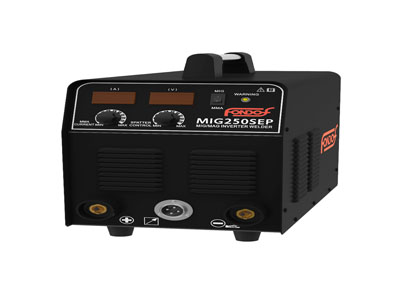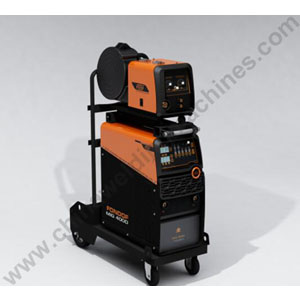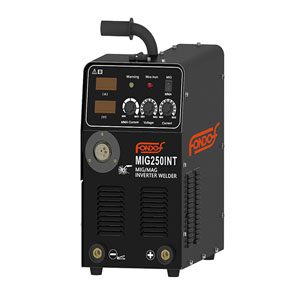What Is The Difference Between MIG And MAG?
 09. 13, 2021
09. 13, 2021
MIG and MAG Welding are gas metal arc welding (GMAW) processes that use heat created from a DC electric arc between a consumable metal electrode and a workpiece which melt together to create a weld pool that fuses to form a join.
MIG stands for Metal Inert Gas.
Only inert gases or gas mixtures are used for the shielding gas when MIG welding. Typical inert gases used for MIG welding are argon and helium. These gases are usually used for MIG welding of aluminium and other non-ferrous metals.
MAG Welding
MAG stands for Metal Active Gas.
Active gas mixtures have been developed primarily for welding steels. The composition of the shielding gas has a substantial effect on the stability of the arc, metal transfer and the amount of spatter. The shielding gas also affects the behaviour of the weld pool, particularly its penetration and the mechanical properties of the welded joint.
Where is the Process Used?
MIG/MAG welding processes are very versatile and can be used in a range of sectors, including the metalworking industry, shipbuilding, steel and container construction, and the automotive industry. MIG/MAG processes can be used with components of different thicknesses and geometries, and which are made from different materials. MIG welding is particularly suited to the non-ferrous metals aluminum, magnesium, copper, and titanium. MAG welding is usually used to weld unalloyed, low-alloy, and high-alloy steels.
MIG/MAG Welding: How it Works?
Direct current is used for MIG/MAG welding. The arc burns between the workpiece and a consumable wire electrode, which is also the source of the necessary filler material and is essentially endless. It is supplied either on a spool or in a drum and is guided to the contact tip by the drive unit. The free wire end is relatively short, which allows a high amperage to be used in spite of the thin wire electrodes.
Solid wires or “flux core” wires can also be used as filler metals, depending on the requirements. Solid wires are most often used for MIG/MAG welding. These wires are manufactured by drawing them to the desired nominal diameter from a rolled wire. Flux core wires are manufactured by introducing the powdery filling into a U-shaped strip at one of the production stations. The strip is then sealed by folding or welding it. Different fillings affect the welding process in different ways. The shielding gas flows from a gas nozzle that surrounds the electrode. It protects the arc and the weld pool against contact with the ambient oxygen.
China Welding Machines
Advantages of MIG/MAG Welding:
High deposition rate
No slag formation
Simple ignition of the arc
Well-suited to mechanized and automated welding
High welding speeds can be achieved while still maintaining a high weld seam quality
Well-suited to out-of-position welding and welding in difficult positions
Low filler metal costs
Disadvantages of MIG/MAG Welding:
Welding outdoors or in drafty halls is only possible in certain circumstances
Sensitive to rust and humidity
Susceptible to porosity and lack of fusion
High risk of spattering
Partially lower weld seam quality than with TIG welding
We have China Welding Machines. For more information and help, please contact us. For more information and help, please contact us.





























